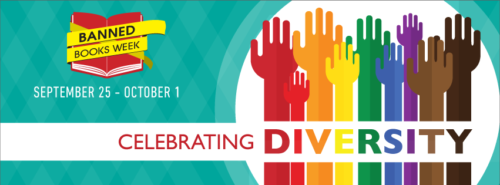Banned Books Week: Celebrating diversity

This year’s Banned Books Week is promoting reading diversely. But what exactly is diversity? Campaigning organization We Need Diverse Books says:
“We recognize all diverse experiences, including (but not limited to) LGBTQIA, people of color, gender diversity, people with disabilities*, and ethnic, cultural, and religious minorities.
“* We subscribe to a broad definition of disability, which includes but is not limited to physical, sensory, cognitive, intellectual, or developmental disabilities, chronic conditions, and mental illnesses (this may also include addiction). Furthermore, we subscribe to a social model of disability, which presents disability as created by barriers in the social environment, due to lack of equal access, stereotyping, and other forms of marginalization.”
Looking at my books read over the last few years, I’ve been putting effort into reading equal numbers of men and women, into widening the geographic and cultural diversity of my reading. And there’s a fair selection of books with LGBT+ and mental illness themes. But one thing from the above definition is clearly lacking on my shelves: illness and physical disability.
I struggle to think of many books I have read that fit into this category. I guess I can count The Curious Incident of the Dog in the Night-Time by Mark Haddon (autism), The Secret Garden by Frances Hodgson Burnett (mysterious invalid illness), What Katy Did by Susan Coolidge (recovery from spinal injury) and The Story of My Life by Helen Keller (blindness). I spot a trend in that three of those are children’s or young adult.
Is this list so short because there aren’t many books published about illness and disability? Or am I missing a rich vein? A quick Google does reveal a few titles I’ve heard high praise of: Wonder by R J Palacio, The Rosie Project by Graeme Simsion, The Fault in Our Stars by John Green and All the Light We Cannot See by Anthony Doerr.
What books have I forgotten?